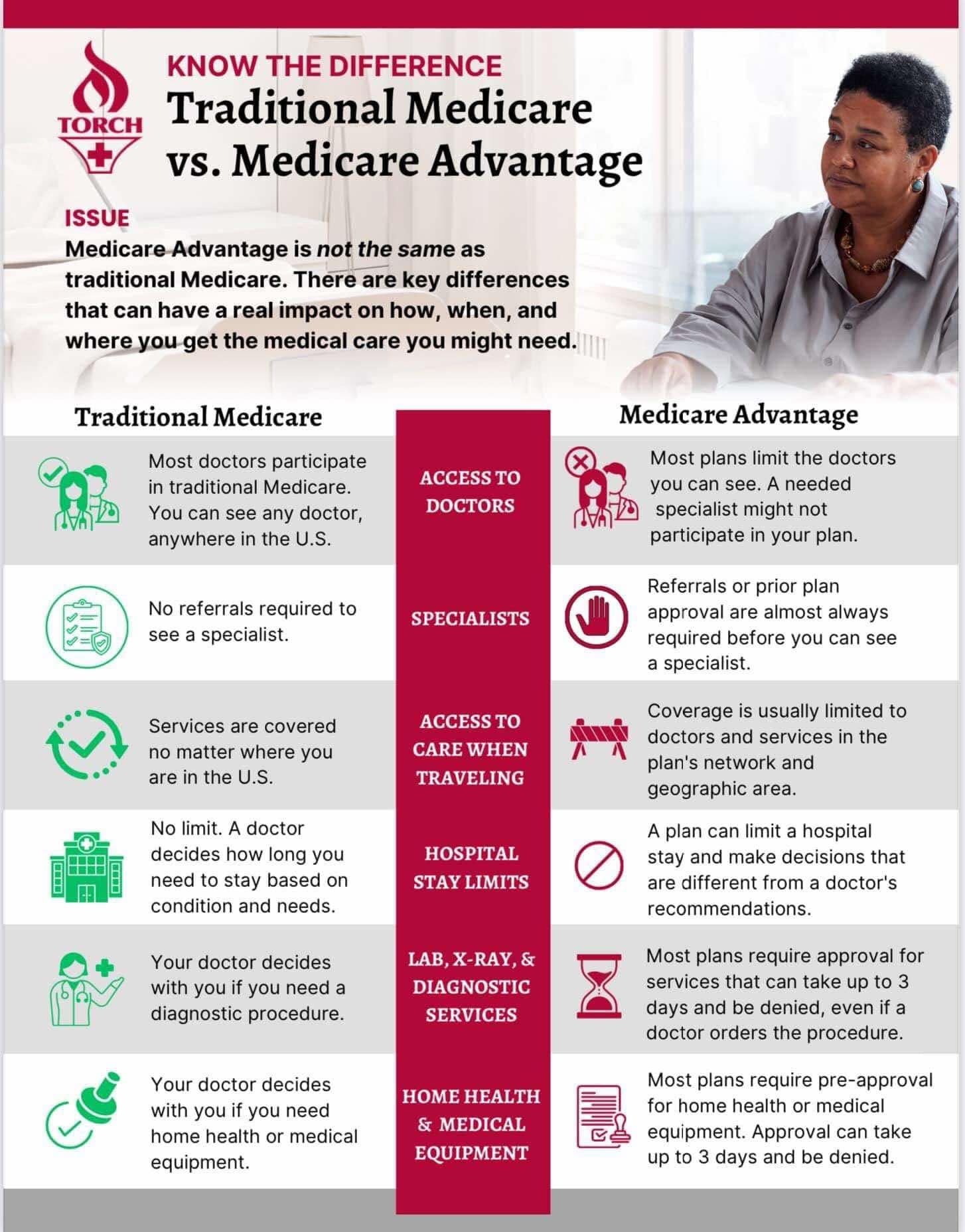As the open enrollment season rolls around, there’s a big ol’ decision sittin’ on the horizon for folks 65 and up. It’s like choosin’ between two pies at a church potluck—do you stick with good ol’ Traditional Medicare, or do you try somethin’ new with a Medicare Advantage plan? This choice can make quite a difference in your healthcare experience and your pocketbook.
Traditional Medicare has been lookin’ out for folks since 1965, and it’s split into two main parts: Part A, which covers hospital stays, and Part B, which takes care of your doctor visits and preventive services. Now, for most people, Part A is free but Part B comes with a monthly premium that depends on your income. Together, they give you a solid foundation for your healthcare, though there are still some out-of-pocket costs like deductibles and coinsurance to think about.
One of the biggest blessin’s with Traditional Medicare is its wide-open network. You can see just about any doctor or go to any hospital in the country that accepts Medicare, no need for referrals or prior approvals. If you like having the freedom to pick your healthcare providers, this is where Traditional Medicare really shines.
But let’s not forget, Traditional Medicare doesn’t cover everything. It leaves out things like prescription drugs (you’d need a Part D plan for that), vision, dental, and hearing services. To fill in these gaps, a lot of folks buy supplemental insurance, known as Medigap, to help cover those extra out-of-pocket costs.
Medicare Advantage, also called Part C, is like a new casserole recipe everyone’s talking about. These plans are offered by private insurance companies and they have to cover at least what Parts A and B do. But the beauty of Medicare Advantage is that it often includes extra benefits like prescription drug coverage, vision, dental, and hearin’ services—all wrapped up in one package.
One of the best things about Medicare Advantage is that it can be pretty easy on the budget. Many of these plans have low or even zero monthly premiums, and some cap your out-of-pocket expenses, which could save you a good chunk of change if you’re someone who needs regular medical care.
But, like Mama always said, “Ain’t no such thing as a free lunch.” Medicare Advantage plans usually come with network restrictions, meanin’ you might have to stick to a specific group of doctors and hospitals. Plus, you might need referrals to see specialists
and get prior approvals for certain treatments or medications. If you like having options, these restrictions might give you pause.
When it comes to choosin’ between Traditional Medicare and Medicare Advantage, it’s a bit like pickin’ between your favorite pies—pecan or sweet potato—it all depends on what you like and what you need. Think about your healthcare needs, your budget, and what matters most to you in a plan.
If you value the freedom to choose your doctors and don’t mind payin’ a bit extra for that peace of mind, Traditional Medicare, especially with a Medigap policy, might be just what the doctor ordered. On the other hand, if you’re looking for a plan that combines multiple services in one and might save you some money, Medicare Advantage could be right up your alley.
Location matters too. In bigger towns and cities, Medicare Advantage plans often have plenty of options, but in more rural areas, you might find that Traditional Medicare gives you more choices.
Whatever you do, don’t rush into it. Take the time to compare your options, look at the coverage, costs, and networks of any Medicare Advantage plan you’re considering, and make sure it’s the right fit for you.
If you’re still feelin’ a bit overwhelmed by all this, don’t worry. There’s help out there. The Medicare Helpline (1-800-MEDICARE) is a great resource for personalized assistance. The State Health Insurance Assistance Program (SHIP) offers free, unbiased counselin’ to help you understand your choices. And if you want to compare plans in your area, Medicare.gov is a good place to start. You can also talk to an insurance agent who knows the ins and outs of Medicare. And don’t forget about the National Council on Aging (NCOA) and AARP—they’ve got all kinds of resources and tools online to help you make the best choice for your situation.
The decision between Traditional Medicare and Medicare Advantage is not one-size-fits-all. It requires careful consideration of your healthcare needs, budget, and lifestyle. By understandin’ the differences between these options, you can make an informed choice that ensures you have the coverage and care you need.
If you’re still unsure about which Medicare plan is right for you, there are several resources available to help guide your decision. The Medicare Helpline (1-800-MEDICARE) is a valuable resource for personalized assistance. Additionally, the State Health Insurance Assistance Program (SHIP) offers free, unbiased counselin’ to
help you understand your options. For a more in-depth comparison of plans available in your area, visit Medicare.gov or consult with a trusted insurance agent who specializes in Medicare plans. Organizations like the National Council on Aging (NCOA) and AARP also provide comprehensive resources and tools online to help you navigate the complexities of Medicare.
At the end of the day, it’s all about findin’ what works best for you. Take your time, weigh your options, and pick the plan that gives you the coverage and peace of mind you deserve.





